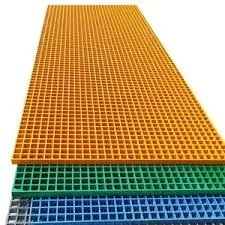
-
 Afrikaans
Afrikaans -
 Albanian
Albanian -
 Amharic
Amharic -
 Arabic
Arabic -
 Armenian
Armenian -
 Azerbaijani
Azerbaijani -
 Basque
Basque -
 Belarusian
Belarusian -
 Bengali
Bengali -
 Bosnian
Bosnian -
 Bulgarian
Bulgarian -
 Catalan
Catalan -
 Cebuano
Cebuano -
 China
China -
 China (Taiwan)
China (Taiwan) -
 Corsican
Corsican -
 Croatian
Croatian -
 Czech
Czech -
 Danish
Danish -
 Dutch
Dutch -
 English
English -
 Esperanto
Esperanto -
 Estonian
Estonian -
 Finnish
Finnish -
 French
French -
 Frisian
Frisian -
 Galician
Galician -
 Georgian
Georgian -
 German
German -
 Greek
Greek -
 Gujarati
Gujarati -
 Haitian Creole
Haitian Creole -
 hausa
hausa -
 hawaiian
hawaiian -
 Hebrew
Hebrew -
 Hindi
Hindi -
 Miao
Miao -
 Hungarian
Hungarian -
 Icelandic
Icelandic -
 igbo
igbo -
 Indonesian
Indonesian -
 irish
irish -
 Italian
Italian -
 Japanese
Japanese -
 Javanese
Javanese -
 Kannada
Kannada -
 kazakh
kazakh -
 Khmer
Khmer -
 Rwandese
Rwandese -
 Korean
Korean -
 Kurdish
Kurdish -
 Kyrgyz
Kyrgyz -
 Lao
Lao -
 Latin
Latin -
 Latvian
Latvian -
 Lithuanian
Lithuanian -
 Luxembourgish
Luxembourgish -
 Macedonian
Macedonian -
 Malgashi
Malgashi -
 Malay
Malay -
 Malayalam
Malayalam -
 Maltese
Maltese -
 Maori
Maori -
 Marathi
Marathi -
 Mongolian
Mongolian -
 Myanmar
Myanmar -
 Nepali
Nepali -
 Norwegian
Norwegian -
 Norwegian
Norwegian -
 Occitan
Occitan -
 Pashto
Pashto -
 Persian
Persian -
 Polish
Polish -
 Portuguese
Portuguese -
 Punjabi
Punjabi -
 Romanian
Romanian -
 Russian
Russian -
 Samoan
Samoan -
 Scottish Gaelic
Scottish Gaelic -
 Serbian
Serbian -
 Sesotho
Sesotho -
 Shona
Shona -
 Sindhi
Sindhi -
 Sinhala
Sinhala -
 Slovak
Slovak -
 Slovenian
Slovenian -
 Somali
Somali -
 Spanish
Spanish -
 Sundanese
Sundanese -
 Swahili
Swahili -
 Swedish
Swedish -
 Tagalog
Tagalog -
 Tajik
Tajik -
 Tamil
Tamil -
 Tatar
Tatar -
 Telugu
Telugu -
 Thai
Thai -
 Turkish
Turkish -
 Turkmen
Turkmen -
 Ukrainian
Ukrainian -
 Urdu
Urdu -
 Uighur
Uighur -
 Uzbek
Uzbek -
 Vietnamese
Vietnamese -
 Welsh
Welsh -
 Bantu
Bantu -
 Yiddish
Yiddish -
 Yoruba
Yoruba -
 Zulu
Zulu
frp chimney construction and installation for industrial and
FRP Chimney Construction and Installation for Industrial Applications
Fiberglass Reinforced Plastic (FRP) is increasingly becoming the material of choice for constructing chimneys in industrial settings. This shift is primarily due to its superior properties that offer enhanced durability, lightweight advantages, and resistance to corrosive environments. In this article, we will explore the construction and installation aspects of FRP chimneys, focusing on their benefits, applications, and key considerations for industrial facilities.
Advantages of FRP Chimneys
One of the most significant advantages of FRP chimneys is their resistance to corrosion. Unlike traditional materials such as steel or reinforced concrete, which can deteriorate when exposed to harsh environmental conditions, FRP chimneys are designed to withstand aggressive chemicals, moisture, and temperature fluctuations. This property not only prolongs their lifespan but also reduces maintenance costs associated with corrosion-related repairs.
Another crucial benefit of FRP is its lightweight nature. The lower weight of FRP compared to traditional materials simplifies the transportation and installation process. Installation crews can work more efficiently, often reducing labor costs and the time required to complete the project. Additionally, the flexible design of FRP chimneys allows for easy customizations to meet specific height and diameter requirements, making them suitable for a wide variety of industrial applications.
Construction Process
The construction of FRP chimneys typically begins with detailed engineering assessments and design considerations tailored to the facility’s needs. This includes evaluating the chemical composition of flue gases, environmental exposure, and building codes. Advanced computational simulations may be employed to predict the chimney's performance under various conditions, ensuring safety and efficiency.
frp chimney construction and installation for industrial and

Once the design is finalized, the manufacturing process begins. FRP chimneys are usually produced using a combination of fiberglass, resins, and fillers, which are molded into the desired shape. This process can be performed off-site, which minimizes disruptions to the industrial facility's operations. After production, the chimneys are transported to the installation site.
Installation Considerations
For the installation of FRP chimneys, it is essential to follow a systematic approach to ensure structural integrity and compliance with safety standards. Proper site preparation is crucial, including securing a stable foundation that can support the chimney’s weight and height. Skilled personnel should handle the installation to prevent any mishaps that could lead to structural failures.
Moreover, attention must be given to the connection points between the chimney and the exhaust system. Proper sealing techniques and materials must be used to prevent leaks and maintain optimal performance. Rigorous quality control checks during and after the installation process are vital to ensure that all specifications are met.
Conclusion
In conclusion, FRP chimney construction and installation represent a modern solution for industrial applications, offering numerous advantages such as corrosion resistance, reduced weight, and customizable designs. As industries continue to seek efficient and reliable solutions for their exhaust systems, FRP chimneys are poised to play a significant role in enhancing operational efficiency while lowering maintenance costs. With careful planning and execution, these structures can provide long-lasting performance in demanding industrial environments.









